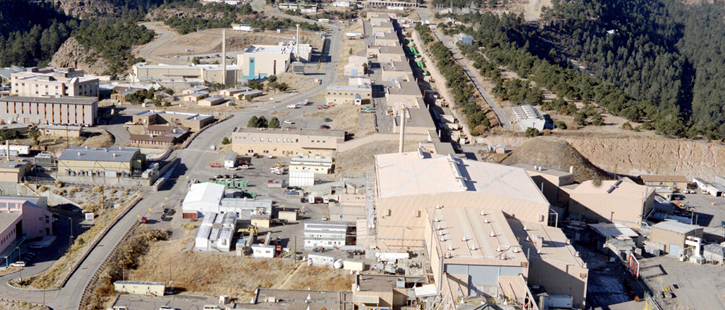Accelerators, Electrodynamics
National security depends on science and technology. The United States relies on Los Alamos National Laboratory for the best of both. No place on Earth pursues a broader array of world-class scientific endeavors.

The proton linear accelerator (LINAC) at LANSCE is one of the nation's most powerful proton linear accelerators and has served the nation since 1972, providing the beam current required by all the experimental areas that support NNSA Defense Program and other DOE missions.
Overview
Los Alamos National Laboratory prides itself on its continuing record of excellence in the field of accelerator science and technology directed toward both fundamental scientific research and issues of national security and energy security.
Likewise, the Laboratory has made and continues to make significant contributions to national security using its expertise in diverse areas of electrodynamics.
Capabilities
Capabilities in this area are nested around four major outstanding facilities:
- The Los Alamos Neutron Science Center (LANSCE) is one of the world’s most productive multidisciplinary international user facilities. At its core is a nearly 1-mile-long, 800-MeV proton linear accelerator (linac) with demonstrated capability of delivering 1-MW beam power. It supports five distinct user areas enabling experiments for both forefront basic civilian and applied national security research: the Isotope Production Facility (IPF), the Manuel Lujan Neutron Scattering Center (Lujan Center), the Ultracold Neutron (UCN) facility, the Weapons Neutron Research (WNR) facility, and the Proton Radiography (pRAD) facility.
- The Dual Axis Radiographic Hydrodynamic Test (DARHT) facility is a unique national facility unmatched in the world in its capability to produce x-ray pulses delivering multi-frame flash radiographic images of a nonnuclear weapon mockup as it implodes.
- Building on our long history of leadership in free electron lasers (FELs), the Laboratory now houses one of the broadest FEL capabilities in the nation, developed mostly through the Navy FEL program and now augmented by early cutting-edge research on x-ray free electron lasers (XFEL). An XFEL is planned for the future Los Alamos National Laboratory signature facility, MaRIE (matter-radiation interactions in extremes).
- In addition, research using the Trident laser at Los Alamos continues to yield new and exciting results in the field of ultra-intense lasers and laser acceleration of ions.






